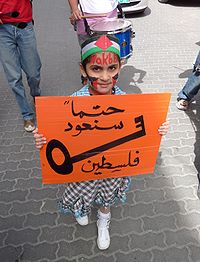Antakya was known as Antioch in ancient times, as it was the place where the followers of Jesus Christ were called Christians for the first time. The city and its massive walls also played an important role during the Crusades.
Antioch is a historic city on the left bank of the Orontes River, 30 km from the Mediterranean coast in Iskenderun. It is of the most important cities in the history of Syria, where it was the capital of Syria before the Arab conquest in the seventh century and yet still the capital of the Syrian Christian Churches.
Antiquity
According to Wikipedia, Antioch has been occupied by humans since the Calcolithic era (6th millennium BC), Subsequent rulers of the area include King of Macedonia Alexander the Great who, after defeating the Persians in 333 BC, followed the Orontes south into Syria. The city of Antioch was founded in 300 BC, after the death of Alexander, by the Seleucid King Seleucus I Nicator. It had an important role as one of the largest cities in the Roman Empire and Byzantium, and was a key location of the early years of Christianity, the Antiochian Orthodox Church, the rise of Islam, and the Crusades.
The Crusaders’ Siege of Antioch conquered the city and caused significant damage during the First Crusade. Although the city had a large Christian population, it was betrayed by Islamic allies of Bohemund, prince of Taranto. Following the defeat of the Turkish garrison, he became its overlord. It remained the capital of the Latin Principality of Antioch for nearly two centuries.
In 1268 it fell to the Egyptian Mamluk Sultan Baibars after another siege. Baibars proceeded to massacre the Christian population. In addition to suffering the ravages of war, the city lost its commercial importance because trade routes to the Far East moved north following the thirteenth-century Mongol conquests. Antioch never recovered as a major city, with much of its former role falling to the port city of Alexandretta (Iskenderun). An account of both cities as they were in 1675 appears in the diary of the English naval chaplain Henry Teonge.
In 1822 (and again in 1872), Antakya was hit by an earthquake and damaged. When Egyptian general Ibrahim Pasha established his headquarters in the city in 1835, it had only some 5,000 inhabitants. Supporters hoped the city might develop thanks to the Euphrates Valley Railway, which was supposed to link it to the port of Sueida (now Samandağı). However, such plans were doomed to come to naught. The city suffered repeated outbreaks of cholera due to inadequate infrastructure for sanitation. Later the city developed and rapidly resumed much of its old importance when a railway was built along the lower Orontes Valley.
Densely-built Antakya in 1912: the traditional Muslim city shows no trace of its Hellenistic planning. To the east, orchards (green) fill the plain.
Geography
Antakya is located on the banks of the Orontes River approximately 22 km (14 mi) inland from the Mediterranean coast. The city is in a valley surrounded by mountains, the Nur Mountains (ancient Amanos) to the north and Mount Keldağ (Jebel Akra to the south, with the 440 m high Mount Habib Neccar (ancient Silpius) forming its eastern limits. The mountains are a source of a green marble. Antakya is at the northern edge of the Dead Sea Rift and vulnerable to earthquakes.
Climate
The city enjoys a Mediterranean climate with hot and dry summers, and mild and wet winters; however due to its higher altitude, Antakya has slightly cooler temperatures than the coast.
M. Wassouf

